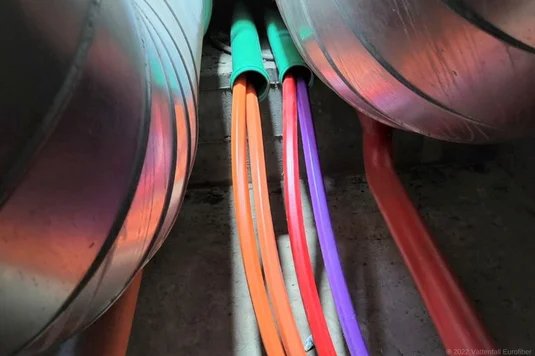

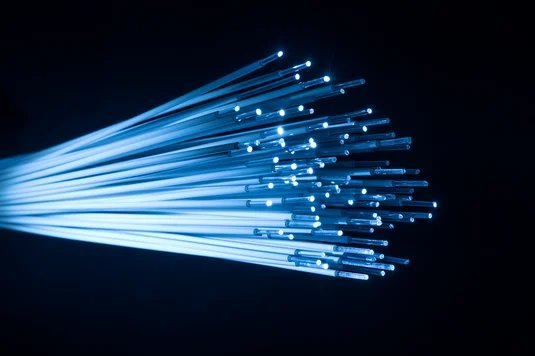
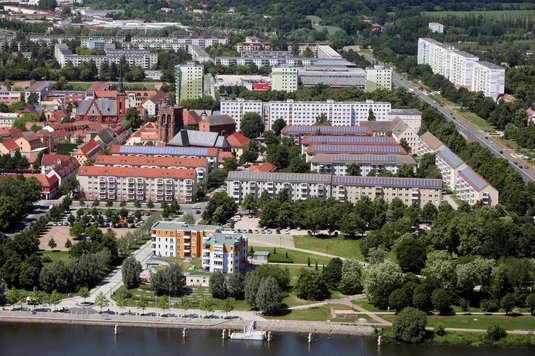

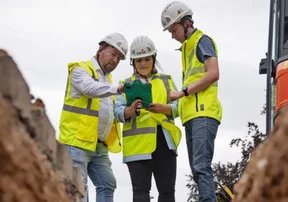
Fast internet connections have become crucial for working from home comfortably, accessing public services and enabling smart-city technologies. In Germany, the expansion of fibre-optic connections is well underway as the government aims to connect all households by 2025.
With its picturesque riverside setting and thousand-year-old castle, the little town of Leisnig might not seem like the most obvious place to go in search of cutting-edge telecommunications technology. Yet this tranquil eastern German town is now on the fast-track to the future thanks to SPIE’s specialised cable-laying operation WirliebenKabel. The fibre-to-the-home (FTTH) project is halfway through an eighteen-month timeline to deliver fibre-optic internet to Leisnig’s 8,500 inhabitants.
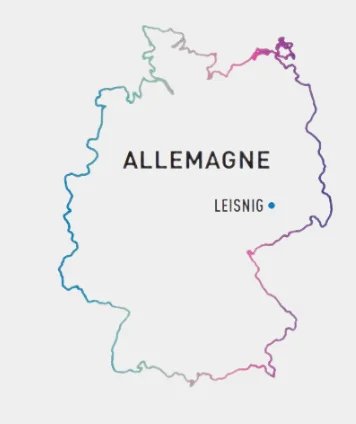
Across Germany, other towns are vying to do the same, eager to catch up with their European neighbours. In the Netherlands, fibre-optic networks are much better developed, and in France, a national project launched in 2013 to equip 100% of the territory with new generation internet access networks, is nearing its goal. In Italy, Switzerland, and the Nordic countries, FTTH is increasingly standard. In response, last autumn the incoming German government set an ambitious goal to extend one-gigabit connection to all households by 2025, pledging over €20 billion to fund the project. Yet money, as it turns out, is not the issue: it is the complexity and workload behind laying subterranean cables.
“ In Leisnig, we won the cables contract from provider eins energie because we are a full-service company. We do it all: planning, surveying, laying and assembly.”

That means handling seventy kilometres of fibre-optic cable, with forty workers preparing sites before specialist teams lay and connect cables. “Materials shortages are affecting us, too, and it’s tough to keep things on track at the moment,” confides Scheinert, “but we’re managing.” So any ways to speed up the process are welcome – and that’s where Jennifer Jentschke from the Digital Transformation department comes in. In July, she came to Leisnig to test a new solution with the potential to slash lead times: DeepUp. This newly developed technology uses handheld scanners to map underground piping and cable networks, creating a digital copy of them for future reference. It applies algorithms to recognise specific types of infrastructure, potential barriers and even soil types.
“ DeepUp’s ultimate goal is to create digital twins of the under-street networks of all major cities”

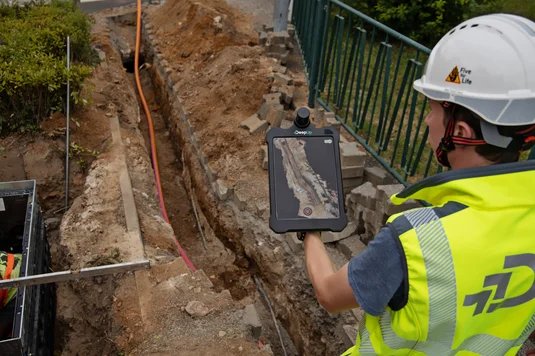
Jennifer was delighted with how the technology performed on-site in Leisnig. “Often,” says Scheinert, “official documentation no longer reflects what we find when we start digging, so an easy-to-use mapping tool like DeepUp would make our lives easier.” In light of the large number of cables set to be laid in Germany by 2025, this certainly won’t be the last time you hear about DeepUp.
allocated by Germany to its superfast broadband plan
inhabitants will be connected to fibre-optic broadband as part of this project
The FTTH (Fibre To The Home) project will last a total of 18 months


